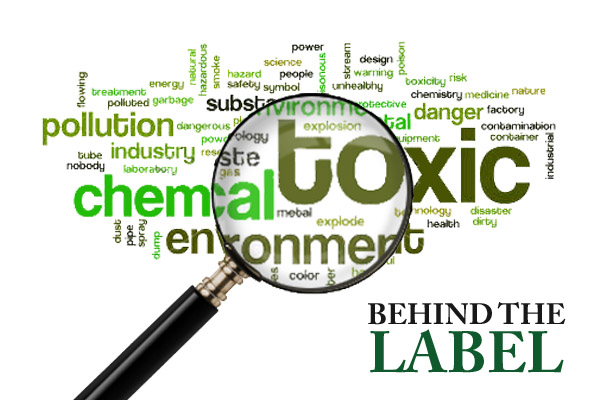Behind the Label: Blistex Lip Salve

Warning! Kissable lips may endanger your health. By Pat Thomas.
Lip balm is a year-round product. For every season there is a reason – winter cold, autumn dryness, spring and summer sun – to smear it on several times a day. Chances are you know someone with a lip balm habit. In fact, more than half of us regularly buy lip balms and on average we each own three to four tubes at any given time.
This is because lip balms are near perfect impulse buys, generally displayed near a cash register – even in health food shops. Our impulsive grab for them arises from the fact that many of us like to keep a tube handy in various locations like handbags, office desks, cars, bedside tables and coat pockets, for whenever lip dryness strikes.
For nearly 60 years Blistex Inc has been producing popular lip care products. The Blistex brand is among the UK’s best selling lip balms and even in the US, where competition is fierce, it ranks third (after GlaxoSmithKline’s Abreva and Wyeth’s Chapstick) and managed to rake in more than $12 million in sales last year.
The newest addition to the Blistex range is Spa Effects, a twin pack of aromatherapy lip balms with added sunscreen, which come in ‘relaxing’ vanilla and plum and ‘renewing’ cucumber and melon scents.
The first thing you notice, however, is that there are no natural scents listed in the ingredients. The pack claims the addition of ‘essential oils’ – but apart from limonene, which can be either natural or synthetic, there are no aromatic oils to be found.
More worrying is the shocking number of chemicals, six in all, for which there is no relevant safety data whatsoever. The label calls them ‘effective moisturisers’; in the trade they are known as ‘oleochemicals’. The starting materials for oleochemicals are vegetable and animal oils and fats. These are then hydrogenated or partially hydrogenated, an energy intensive and polluting process that includes heating the oil to a high degree and reacting it with hydrogen gas in the presence of a metal catalyst such as nickel, copper chromate, palladium or platinum. The purpose of this process is, ironically, to make these natural oils feel and perform more like petrochemically derived mineral oils.
Cosmetic oleochemicals are subject to a tremendous amount of greenwashing that usually includes phrases like ‘naturally derived’ and ‘made from renewable sources’. But there is nothing natural about these chemicals. They come straight from the biofuels industry and are as poor a solution to petroleum-derived cosmetic ingredients as plant-derived fuel is to out-of-control petrol consumption.
Oleochemicals can be found in both conventional and ‘natural’ cosmetics. They can also be found in lubricants, leather, paints and coatings, printing inks, rubber, plastics, and in metal-working and many other industries.
Hydrogenation turns an otherwise healthy fat into a toxin. Eating trans-fats is associated with the development of heart disease, cancer and diabetes. So what are they doing in a product that initially goes on the lips but inevitably ends up being swallowed? In fact the instruction to ‘smother your lips’ and the inclusion of the artificial sweetener saccharin (a potential carcinogen) suggests that Blistex expects you to swallow its product. But beware; none of the oleochemicals in this product have safety data to show whether it is actually safe to do so.
Sidebar: Ingredients
Hydrogenated Polyisobutene
Moisturising oil
Can cause mild skin and eye irritation, allergic reactions. A synthetic squalene derived from olive oil. Synthetic squalene was the adjuvant in the anthrax vaccine given to Gulf War soldiers and a suspected contributor to symptoms of Gulf War Syndrome. Unknown if it is safe to swallow, but ingestion of synthetic squaline raises cholesterol levels in animals.
Triundecanoin
Emollient, carrier
Potential eye, skin and respiratory irritant. Unknown if it is safe to swallow.
Ethylhexyl methoxycinnamate, Benzophenone- 3 [Oxybenzone], Homosalate
Sunscreens
Benzophenone-3 is also a fixative for aromas. Can cause hormone disruption, increases risk of skin cancer, penetration enhancers – alters skin structure allowing other chemicals to reach the bloodstream.
Hydroxystearic acid
Wax (also known as 12-Hydroxystearic acid)
Derived from castor oil. Unknown if it is safe to swallow.
Trimethylopropane tricaprylate/tricaprate
Emollient, film-former
Used in manufacturing plastic coatings, inks and adhesives. Unknown if it is safe to swallow.
Aroma
Fragrance
Adverse effects can include asthmatic reactions; skin irritation; central nervous system disruption (eg headache, mood swings, depression, forgetfulness), and hormone disruption.
Propylparaben
Preservative
Can cause skin irritation, hormone disruption.
Cholesteryl/behenyl/octyldodecyl lauroylglutamate
Emollient, wax
Can cause skin, eye, nose and throat irritation, itchiness and/or erythema, shortness of breath. Relative of monosodium glutamate (MSG), so potential neurotoxin. Unknown if it is safe to swallow.
Saccharin
Sweetener
Carcinogenic – linked to bladder cancer in animals. Banned in the US.
Dimethicone
Film former
Can cause skin irritation. Keeps other ingredients in the product in contact with the skin for longer.
Bis-diglyceryl polyacyladipate-2
Emollient, gloss
The main constituent of nylon. Unknown if it is safe to swallow.
Limonene
Preservative, fragrance
Common contact allergen, respiratory irritant. Produces tumours, reproductive abnormalities and delayed growth in some animals.
Sidebar: Alternatives
The slippery, gooey feeling produced by lip balms isn’t natural; lip skin isn’t normally moist all the time. The healthiest approach to lip care is save the salve for times of actual need. For soothing balms made with natural oils, and without sunscreens, try these first:
Burt’s Bees Beeswax Lip Balm
www.burtsbees.com
Earthbound Organics
Calendula and Cocoa Butter Lip Balm
www.earthbound.co.uk
Essential Care Organic Lip Slik
www.soorganic.com
Solace Skin Defence Lip Salve
www.barefoot-botanicals.com
Badger Balm Lip Balm Stick
www.badgerbalm.com
Living Nature Manuka Honey Lip Balm
www.livingnature.com
Love the Planet LipRescue
www.lovetheplanet.co.uk
This article first appeared in the Ecologist November 2005.












